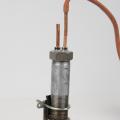I always carry my smartphone in my pocket. I don't use bags or cases with a closed screen. In this regard, my screen is constantly rubbing against what is in my pocket. Sometimes it can be keys or, say, sand that got inside. In one word - "trouble". Even protective film (I most often use Brando) does not help and over time the entire screen is covered with small scratches.
You can endlessly change protective films or hope for the strength of your native glass, or you can use a more radical solution - stick safety glass.
This article will focus on protective glass , which can be purchased on the company's website Mugen power.
Characteristics of Mamoru glass (from the seller's website):
Exceptional transparency;
Made from chemically treated high quality clear tempered glass;
Surface hardness 9H, which is 2-3 times that of PET film;
Oleophobic coating protects against fingerprints and makes cleaning easier;
Gentle Touch retains the original sensitivity of touchscreens.
The packaging indicates that the glass consists of five layers.
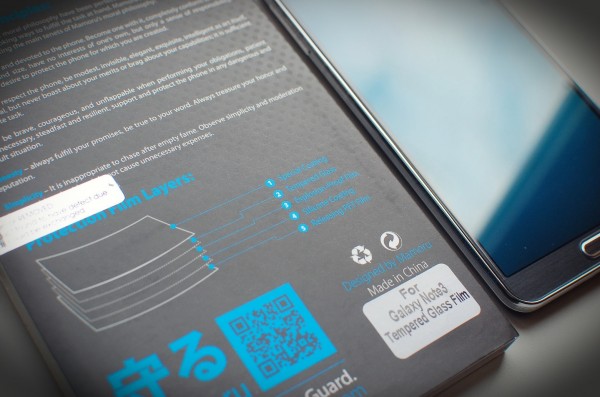
The protective glass is well packed. There are two reversals inside. In the left spread, an alcohol (actually not, the solution is only 70%) napkin for pre-cleaning the screen before gluing, a lint-free cloth for removing dust and a piece of plastic for removing bubbles. In the right-hand spread, there is actually the protective glass itself, packed in the instructions for gluing.
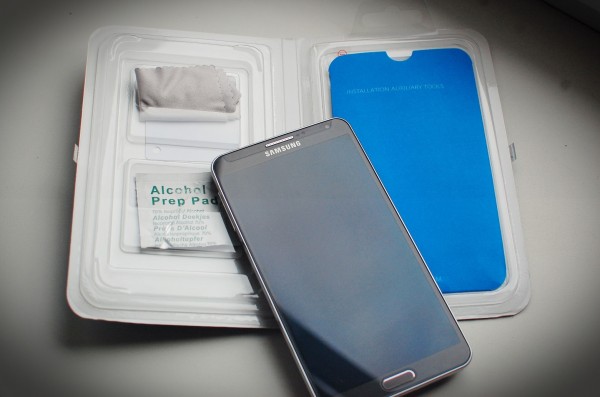
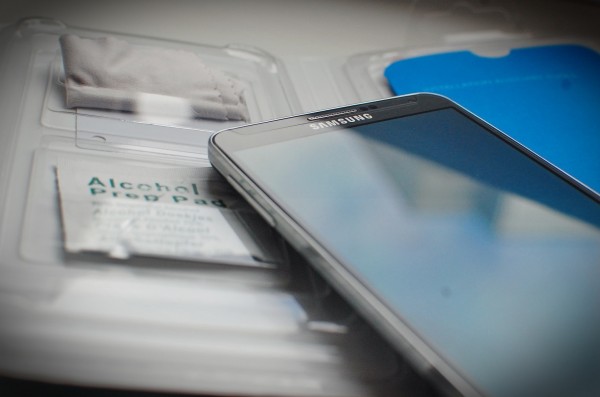
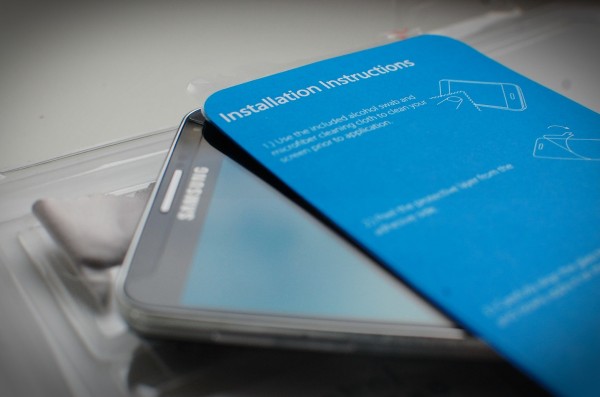
The gluing procedure is the same as for a regular protective film, except for the step of treating the screen with an alcohol wipe. Before gluing, carefully clean the screen with an alcohol wipe to remove all grease stains. Then the screen is cleaned of any dust particles. I want to pay special attention to this stage! In order not to be disappointed in the quality of the protective glass, as well as in the aesthetic appearance of your smartphone, I strongly recommend removing ALL dust from the screen, even the smallest dust particles. Before gluing the screen glass must be absolutely smooth and absolutely clean for light reflection over the entire area.
![]()
After the screen is ready, we proceed to gluing the glass itself. To do this, according to the manufacturer's instructions, the protective film is removed from the glass itself and the glass, previously laid in the center of the screen of your smartphone, is pressed with your finger in the center. Within a few seconds, the adhesion properties of the glass will work with the glass of your smartphone and the glass will stick tightly. For the most curious recorded a videoHow I applied the Mamoru protective glass to the Samsung Galaxy Note 3.
After the glass has been glued with a special piece of plastic, you can "expel" the remaining air from the package, if any. If immediately after gluing you find numerous microscopic air dots under the glass - do not be alarmed! These bubble points will disappear with just a little rubbing. We are not talking about large air bubbles or dust trapped under the protective glass, but microscopic ones. When gluing a simple protective film, I did not notice such bubbles. Apparently this is due to the peculiarity of adhesion of the protective glass.
The experience of using Mamoru protective glass tells me that on all my future smartphones I will definitely use only protective glasses. Firstly, they are not much thicker than the film, and therefore appearance the device does not change at all. Secondly, no film can be compared to protective glass in terms of strength and wear resistance.
With a relatively inexpensive price (at the time of publication of the review - 880 rubles or $ 19.95), I would like to say that the ease of use and protection of the smartphone screen is justified.
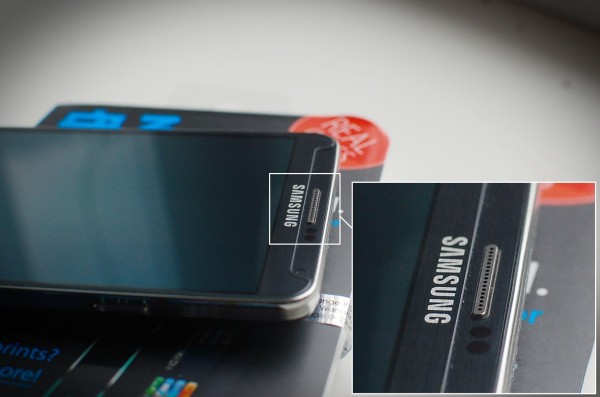
I would also like to say about the oleophobic coating. It is present. Fingerprints are really less than on a screen without such a cover (checked on another phone). Prints are cleaned quickly and easily enough. But what I would like to note is that after installing the protective glass, it became very pleasant to use the smartphone. It is difficult to explain in words, but the touch screen is very smooth and soft at the same time. It is a pleasure to tap and move your fingers on the screen, it glides very well.
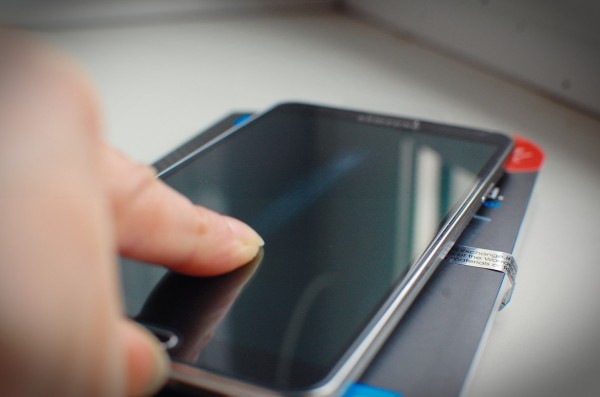
I have been carrying my smartphone in my pocket with protective glass for over two weeks now. During this time, not a single scratch, scratch or something similar to damage appeared on the glass. I specifically tried to scratch the glass (it is also protective) with a clerical knife, scissors or coins. No trace. Of course, without fanaticism. I tried to press hard with a scissors blade on the glass and move it while continuing to press hard - it doesn't scratch! I admit that if you press with all your might, it will still get scratched, but then the end of the smartphone screen will come.
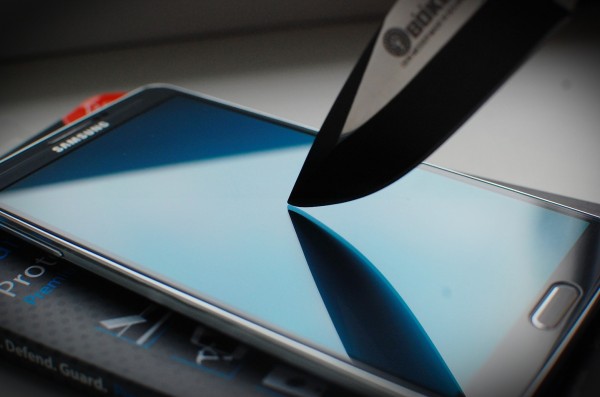
Good luck with the right choice and operation of your smartphone!
If you are interested in the news of the IT world as much as we are, subscribe to our materials at.
All advanced users mobile devices they are well aware that Corning makes durable glass for covering the screens of various gadgets. This refers to glass called Gorilla Glass. They are installed on almost all modern gadgets, including Apple products.
But, more recently, the above-mentioned company from the city of Cupertino (California) decided to abandon the already familiar material in favor of more new technology - Sapphire. It seems that sapphire crystals are stronger and more reliable.
In turn, Corning could not calmly endure such (from its point of view) injustice and decided to prove to the whole world that its glasses are stronger than the advertised Sapphire (sapphire).
So, the representatives of the Corning company decided to test the strength of their glass and the glass of a competitor. In other words, it can be interpreted as: Gorilla Glass vs. Sapphire. Before the mechanical strength test, the testers placed two pieces of glass in a jar with different objects. This reservoir rotated on a special stand, simulating wear and tear as in normal use in life.
After 45 minutes of "heavy use", two slides were prepared for press testing. The task is simple - to find out which glass will withstand the heavy load.
The undisputed winner was Corning's Gorilla Glass. It burst under a load of 197,756 grams or 197,756 kilograms. What about the competitor? The tensile strength of the sapphire crystal was only 73,028 grams or 73,028 kilograms.
By the way, you can see for yourself:
Among other disadvantages of sapphire glass, one can note its cost. It exceeds that of Gorilla Glass by almost ten times! And sapphire glass is more harmful to the environment and weighs almost 1.6 times more.
Corning also claims that sapphire is more fragile, but better protected from scratches. Screens protected sapphire crystal less bright, since this material transmits light weaker. In order for the displayed image to be displayed with sufficient quality, more energy is needed. And this will entail a decrease in battery life.
Be that as it may, the decision still remains with the buyer. It's up to you to choose which screen cover suits best and decide which glass is the strongest for a smartphone or tablet. We have provided only facts.
I will say right away - gluing protective films to the screen always seemed to me stupid. Well, really, like a remote control in a bag. The people who did this were usually guided by two reasons. Firstly, in order not to catch scratches on the screen and subsequently sell the phone at a higher price in excellent condition. Second, to get some additional options... For example, anti-reflective films are available. Or matte, with protection from peeping neighbors in transport.
There is also a category of people who get their devices with the film already glued on, and they simply do not take it off. I had a friend who stubbornly did not remove the film with the inscription "Please, remove the protective film" from her smartphone. Some manufacturers of the second echelons of films (protective, not shipping) are glued to the screens of their devices at the factory by default. This is true for budget smartphones and tablets, the screen of which has plastic rather than glass protection.
But enough about the tapes. Their alternative in the form protective glasses I became interested a year ago, when I broke glass on an iPhone (then still 5S). After the replacement, the phone was poorly assembled, and the new screen turned out to be worse quality... So my new "six" received a protective glass immediately, you never know. And then I ordered several more different glasses to compare them.
So, what are the advantages of protective glass (as opposed to film):
- Most likely will save original glass screen in case of an unsuccessful fall (I confirm - I had hook hands and experience).
- Glass is much easier to stick on than a film, under which any speck of dust bubbles.
- Glass is more pleasant to the touch, it has a good oleophobic coating and protection from scratches.
- The glass is stronger and more secure, it cannot be peeled off accidentally, for example, by putting the phone in a narrow pocket.
There are no downsides, in my opinion. But there are some peculiarities. Glass is thicker than film, but personally I do not feel it in any way. It cannot noticeably thicken or make the phone heavier. And if you have a smartphone / tablet of some kind rare model, then you may not find a suitable glass for it. And you can't cut it like a film.
What types of glass are there?
Protective glass is a simple thing, like five cents, but it has its own characteristics. First, the thickness. Usually 0.3 mm, but 0.26 mm are also found. I do not see the difference between these options. In addition, the description often includes the expression "2.5D". This means that the edges of the glass are slightly rounded, it is more pleasant to touch them.

There are also "3D" glasses, they are intended for phones with rounded screen edges, which are popular nowadays. For example, Samsung Galaxy S6 Egde and iPhone 6 / 6S. True, technically, we are often not talking about solid curved glasses, they are very fragile and difficult to manufacture. Manufacturers get out of the situation different ways... The most "condo" is when the glass is the size of a phone screen, but not rounded. In this case, dirt and dust are clogged under it. A more elegant solution is when curved metal sides are attached to ordinary glass (and to keep it all, there is a protective film on top). Looks good, though - for an amateur. The metal edges felt sharp to me.
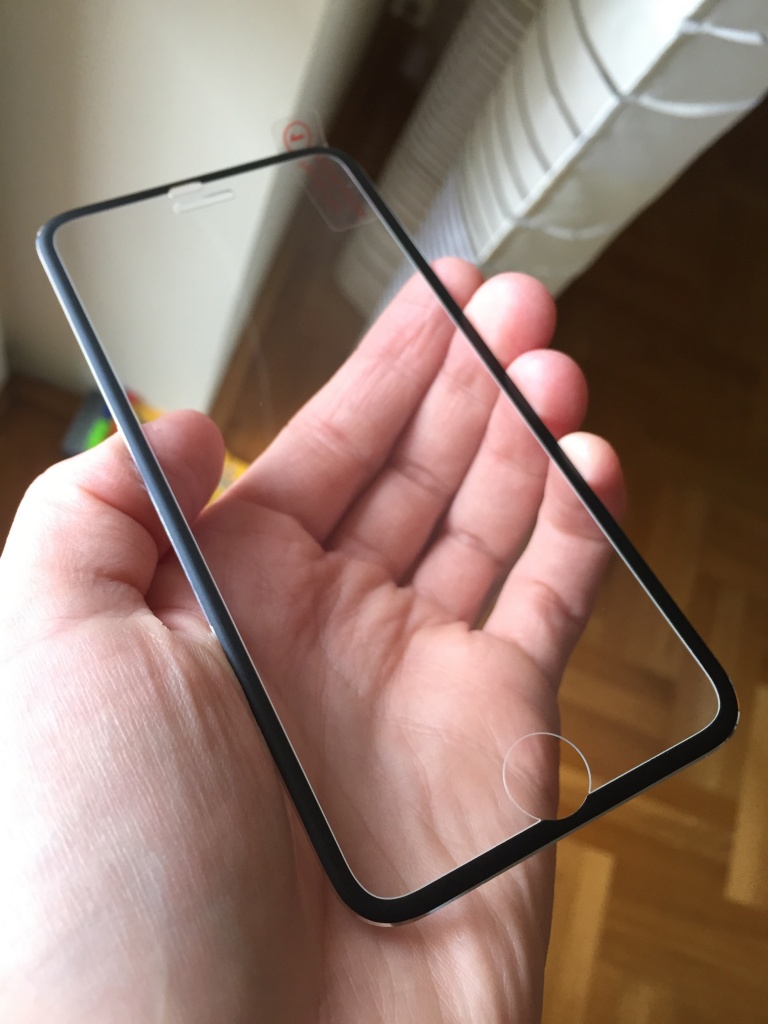
![]()
Right now my favorite is glass with carbon fiber frames. Looks like the original iPhone panel. But it is relatively expensive (do not take cheap analogs, they look bad).
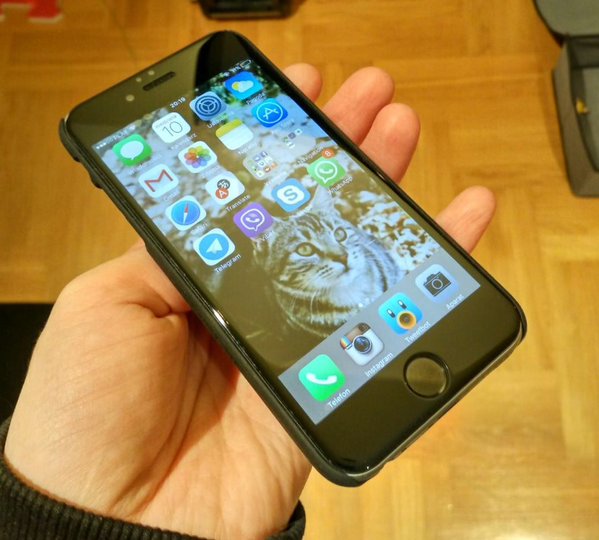
Comes across protective panels with different colors bezels are a way to refresh the look of your phone.
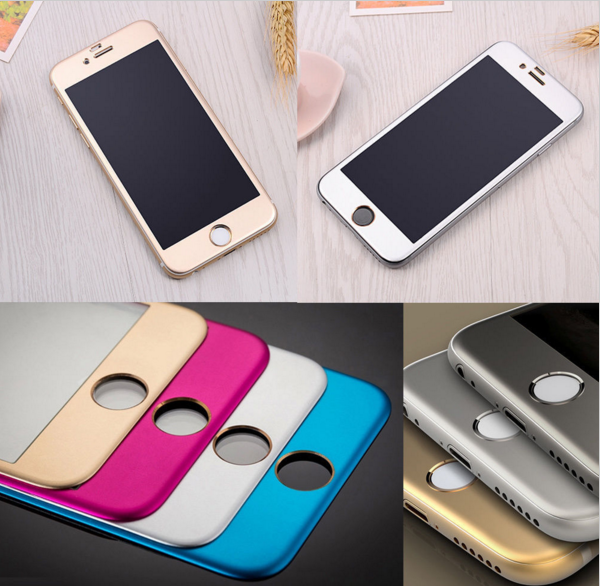

Of course, there are regular protective glasses for phones with curved screens. They cover the front panel before bending, that is, part of the glass still remains unprotected. It looks good in principle, but not very convenient when using gestures when you have to move your finger from the very edge of the screen. It turns out some obstacle, even if it is "2.5D".
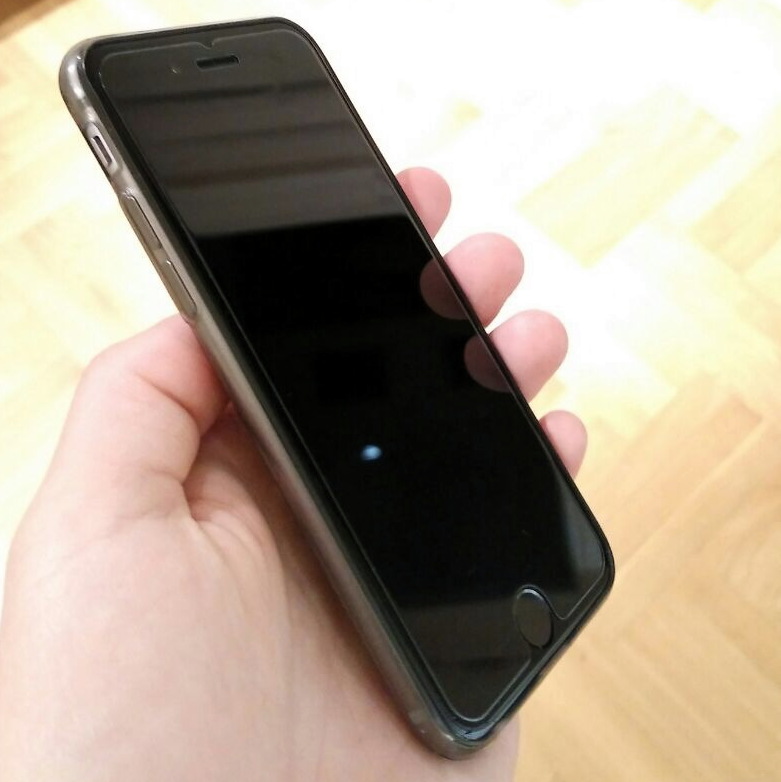
There are glasses with screen protectors from prying eyes. There are 2-in-1 options, when protective glasses are offered for both the front and rear panels.
The strength level for all sold glasses is declared as 9H and is clearly illustrated. In my experience, glasses still actively “catch” scratches, but this is not striking.

Protective glasses for smartphones are especially popular, but a lot of them are also produced for tablets.
Where to buy
The easiest way, in my opinion, is to order from eBay or Aliexpress. I'm not chasing brands, a penny "noname" of quite decent quality, in branded packaging, complete with accessories for cleaning the screen. In our stores they sell the same thing, but with a surcharge. The main thing is to choose an experienced seller and read the reviews (Ali is full of them in Russian, many with photos).
The simplest protective glasses cost from $ 1-3, tricky ones for curved screens are more expensive. Shipping is usually free.
How to glue
Again, glass is easier to stick than film. It miraculously hides even small specks of dust, which would turn into bubbles under the film. The kit usually includes wet and dry wipes, as well as stickers for removing dust. Experts recommend gluing glass in the bathroom with the shower turned on. To have high humidity and all the dust "nailed". But I did pretty well without it.
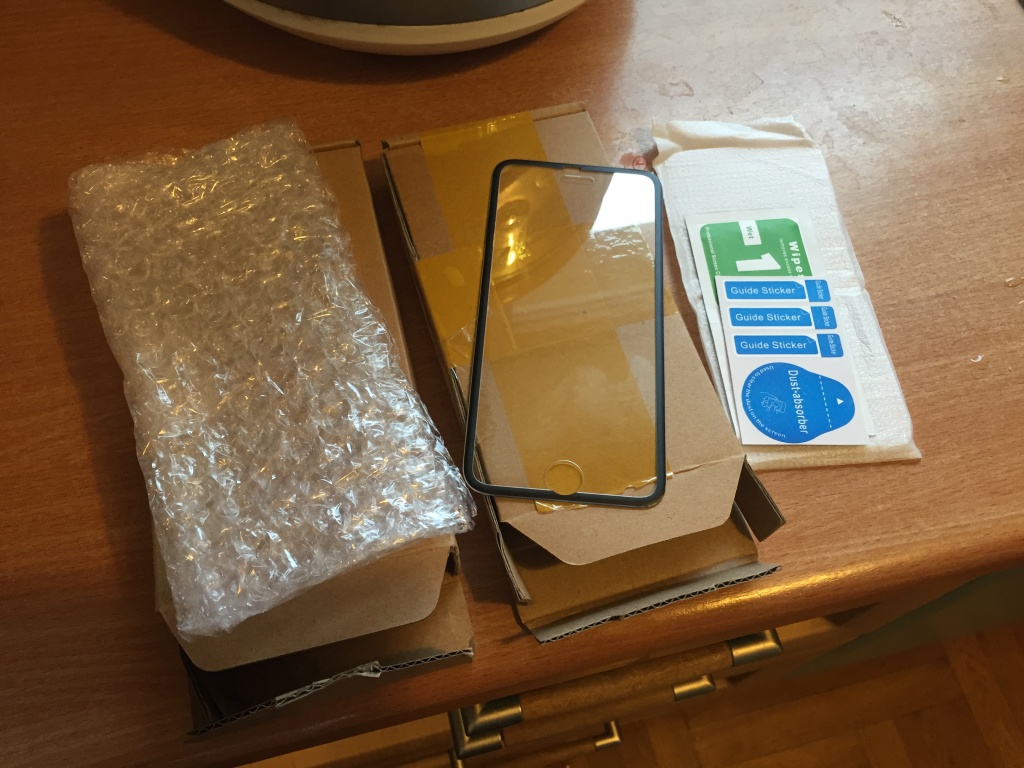
The main thing is to attach the glass so that it does not "squint" in one direction or another. This is important because it has “eyes” for the camera and sensors. If the first time it did not work out exactly, you can carefully peel off the glass and try again. Again, a plus - the film will not survive this. If large particles of dust get under the glass, they can be removed with Velcro from the kit or with a piece of adhesive tape by gently lifting the glass. That's all science.
For scattered girls like me who occasionally drop their phone, protective glass is a godsend and salvation. And even if you've never dropped your phone, think about it, maybe it's worth protecting yourself? It's a shame when, because of one awkward movement, you have to pay a lot of money for replacing the screen.




